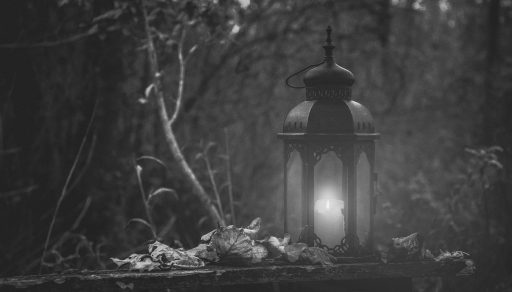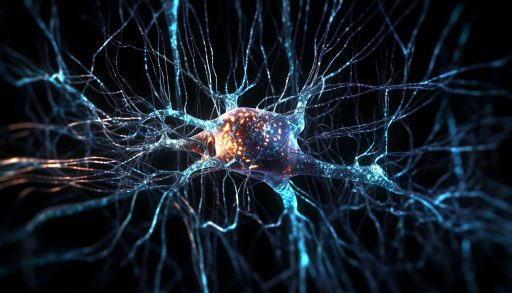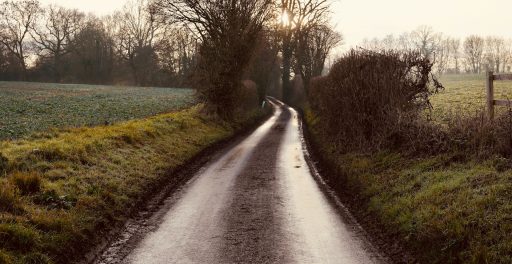The Great Divide: Do Ghosts Haunt Us, or Do We Haunt Ourselves?
From eerie tales whispered around crackling campfires to spine-chilling episodes streamed on late-night telly, ghosts have haunted our imaginations for centuries. Are these spectral encounters glimpses of spirits lingering beyond the veil, or are they merely our minds conjuring phantoms from the shadows? The chasm between believers and skeptics is as ancient as the ghost stories themselves, a divide carved by history, culture, and scientific enquiry.
A Haunting Legacy: The Roots of Belief and Doubt
Ghosts are woven into the fabric of human history. From the misty moors of the United Kingdom to distant corners of the globe, every culture has its tales of restless spirits: spectral knights clanking through castle halls, ghostly maidens gliding across moonlit fields. These stories, passed down like cherished heirlooms, once explained the unexplainable: a creak in the night, a sudden death, a fleeting shadow.
The Victorian era ignited a fever for the supernatural with spiritualism’s rise. Mediums, draped in velvet, claimed to channel the dead during candlelit séances, offering solace to those yearning for lost loved ones. Yet, where belief flourished, skepticism followed. Stage magicians like Harry Houdini exposed charlatans who used sleight of hand, hidden wires, and clever ruses to fake spirit contact. The Fox sisters, whose mysterious “spirit raps” sparked the spiritualist craze in America, later confessed to cracking their toes to mimic ghostly knocks, a revelation that rattled believers and emboldened skeptics.
This clash of wonder and doubt set the stage for a timeless tug-of-war, where truth dances just out of reach.
Science Steps into the Shadows
As science marched forward, it cast a critical eye on the paranormal. Early British researchers like Harry Price ventured into reputedly haunted sites, such as Essex’s infamous Borley Rectory, armed with thermometers, cameras, and electromagnetic detectors. Their mission wasn’t to debunk but to discover: could these eerie phenomena be measured, or were they tricks of nature?
The Cottingley Fairies, photographs championed by Sir Arthur Conan Doyle as proof of the supernatural, turned out to be cardboard cut-outs crafted by mischievous girls. This hoax underscored a vital lesson: even the most convincing evidence demands rigorous scrutiny.
By the 1970s, groups like the Committee for the Scientific Investigation of Claims of the Paranormal (now CSI) introduced strict protocols, double-blind tests, controlled settings, to probe psychic claims. James Randi’s “One Million Dollar Paranormal Challenge” dared anyone to prove supernatural powers under scientific conditions. None succeeded before the challenge closed in 2015. Today, university parapsychology labs push the boundaries further, using cuttingालन-edge tools like thermal imaging and AI-driven audio analysis to hunt for anomalies at haunted sites. Yet, skeptics argue, hard evidence remains as elusive as a ghost itself.
Paranormal or Perceptual? A Closer Look
Skeptics and scientists offer compelling explanations for ghostly encounters, but they don’t hold all the answers. Many experiences, chilling, vivid, deeply personal, resist tidy explanations. The absence of proof isn’t proof of absence, and the line between the unexplained and the soon-to-be-explained is ever-shifting.
The following table presents contrasting viewpoints not to dismiss belief, but to encourage thoughtful exploration and respectful dialogue.
| The Claim | The Believer | The Skeptic | The Science |
|---|---|---|---|
| “I saw a ghostly figure.” | Spirits manifest, tied to places or past tragedies. | Shadows, mist, or pareidolia (seeing patterns like faces) trick the eye. | Studies show electromagnetic fields or hypnagogic hallucinations can mimic ghostly visions. |
| “I heard strange noises.” | Spirits whisper or tread through our world. | Creaky floors, pipes, or wildlife are the culprits. | Infrasound, low-frequency vibrations, can create eerie, untraceable sounds. |
| “I felt a sudden chill.” | Ghosts draw energy, leaving cold spots behind. | Draughts or faulty insulation explain the drop. | Thermal imaging reveals natural airflow, not supernatural forces. |
| “I felt overwhelming dread.” | A psychic warning of a spirit’s presence. | Stress, suggestion, or creepy settings spark fear. | Infrasound and magnetic fields can trigger unease or panic. |
| “Objects moved on their own.” | Poltergeists wreak havoc with physical chaos. | Vibrations, air currents, or human error are to blame. | No replicable evidence supports psychokinesis in controlled tests. |
| “I recorded ghost voices.” | Spirits speak through electronic voice phenomena (EVPs). | Static, radio interference, or audio pareidolia mimic voices. | Spectrograms show EVPs often match random noise, not speech. |
| “This place is cursed.” | Tragic histories bind spirits to a site, felt by many. | Folklore and hype amplify expectations, fuelling legends. | Social psychology shows shared beliefs can spread and solidify haunting tales. |
Infamous Hauntings: Truth or Tale?
Some cases have become legends in the paranormal debate. The Enfield Poltergeist of 1970s London gripped the nation with reports of banging furniture, levitating children, and disembodied voices. Investigators were baffled, but skeptics pointed to inconsistencies and possible pranks by the family’s children. Similarly, Borley Rectory, dubbed “England’s most haunted house,” drew researchers in the 1930s with its tales of apparitions and phantom bells. Later investigations suggested overzealous imaginations and staged tricks played a part.
These stories, blending awe and ambiguity, keep the paranormal debate alive, inviting us to question what we see and hear.
Addressing Common Misconceptions
- All ghost sightings are illusions: Many experiences have natural explanations, yet some reports persist across cultures.
- Skepticism means outright denial: True skepticism values evidence but doesn’t dismiss unusual experiences outright.
- Ghost hunters always seek to prove hauntings: Ethical investigators seek causes, whether paranormal or mundane.
- Ghost hunting gadgets prove hauntings: Tech tools often pick up environmental noise and require careful interpretation.
- Historical hauntings are new inventions: Many haunting tales span centuries and reflect cultural traditions.
The Haunted Mind
Our brains are ghost-making machines, primed to spot patterns even when none exist. A shadow becomes a figure; a creak becomes a footstep. Stress, fatigue, or infrasound can amplify these illusions, creating vivid sensations of a presence. Parapsychologists like Susan Blackmore explore how neurological quirks, like out-of-body experiences, might explain some ghostly encounters. Yet believers argue that the sheer consistency of these stories, across time and cultures, hints at truths science hasn’t yet grasped.
The Modern Ghost Hunt
Today, ghost hunting thrives on telly screens, YouTube channels, and haunted tours. Gadgets like EMF meters, spirit boxes, and infrared cameras are staples, but their reliability is hotly debated. Do they capture spirits or just environmental noise? Online communities buzz with EVP recordings and grainy photos, fuelling both belief and skepticism. The allure of the unknown keeps us hooked, whether we’re chasing ghosts or chasing answers.
Understanding the Divide
Believers find meaning in the mystery, often shaped by personal loss or cultural roots. Skeptics demand evidence, grounded in logic and science. Both sides have value: one cherishes the human experience, the other sharpens our critical lens.
Finding Common Ground
- Skeptics uphold critical thinking and demand evidence.
- Believers value personal experience and mystery.
The Deeper Questions
The ghost debate isn’t just about proving or disproving spirits. It’s a mirror reflecting our deepest questions: What shapes our perceptions? Could consciousness outlive the body? How do we face the unknown? Clinging too tightly to belief or skepticism risks missing the bigger picture. Ghost stories, whether born of spirits or synapses, push us to explore the edges of reality.
Every unexplained chill, every flickering light, every whisper in the dark dares us to keep asking questions. The true haunting isn’t in the ghosts, it’s in our endless quest to understand what lies beyond.
Photo by Dimmis Vart on Unsplash




